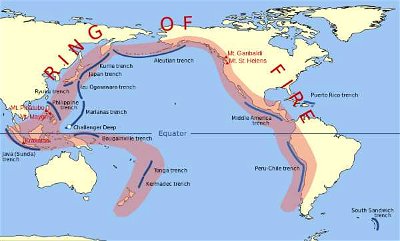16. The day-night cycle is not the only cycle on Earth (the Earth has lots of cycles). While it may not be as noticeable near the equator, the Earth does experience a change of seasons throughout the year. Why does the Earth have seasons?
From Quiz Why on Earth?
Answer:
Because the Earth's axis is tilted relative to the orbital plane.
Most globes you see do not have the Earth spinning on an axis pointed straight at the ground. Usually it's angled at about 23 degrees. This is to better reflect reality, where the Earth has an axial tilt (most planets do, to varying degrees).
In the winter, the axis points away from the sun, and in the summer, the axis points towards the sun. This will change how much sun any given part of the Earth will experience during the day. It's also why the sun goes overhead in summer, while in winter it sometimes seems to barely get over the horizon. Near the equator, there is not much noticeable change. Farther away, the Earth experiences seasons and different amounts of daylight. It can become so extreme near the poles that in summer, daylight can last a whole month, and in winter there is a month-long night.
The opposite ends of the Earth experience the opposite effects. If it is winter in the northern hemisphere, then it is summer in the southern hemisphere. If the north is experiencing spring and getting ready for warm weather, then those in the south are going through fall, and are bundling up.
If the Earth did not have its tilt, then the weather and climate would not change throughout the year. It would always be hot at the equator and get gradually, predictably colder the closer you got to the poles.
 You've undoubtedly heard references to this area, so let's explore some of its geologic features.
You've undoubtedly heard references to this area, so let's explore some of its geologic features.  Have you got rocks in your head? If so, you can work out the names of these rocks from the photo clues given.
Have you got rocks in your head? If so, you can work out the names of these rocks from the photo clues given.  Quick Question
Quick Question = Top 5% Rated Quiz,
= Top 5% Rated Quiz,
 Top 10% Rated Quiz,
Top 10% Rated Quiz,
 Top 20% Rated Quiz,
Top 20% Rated Quiz,
 A Well Rated Quiz
A Well Rated Quiz